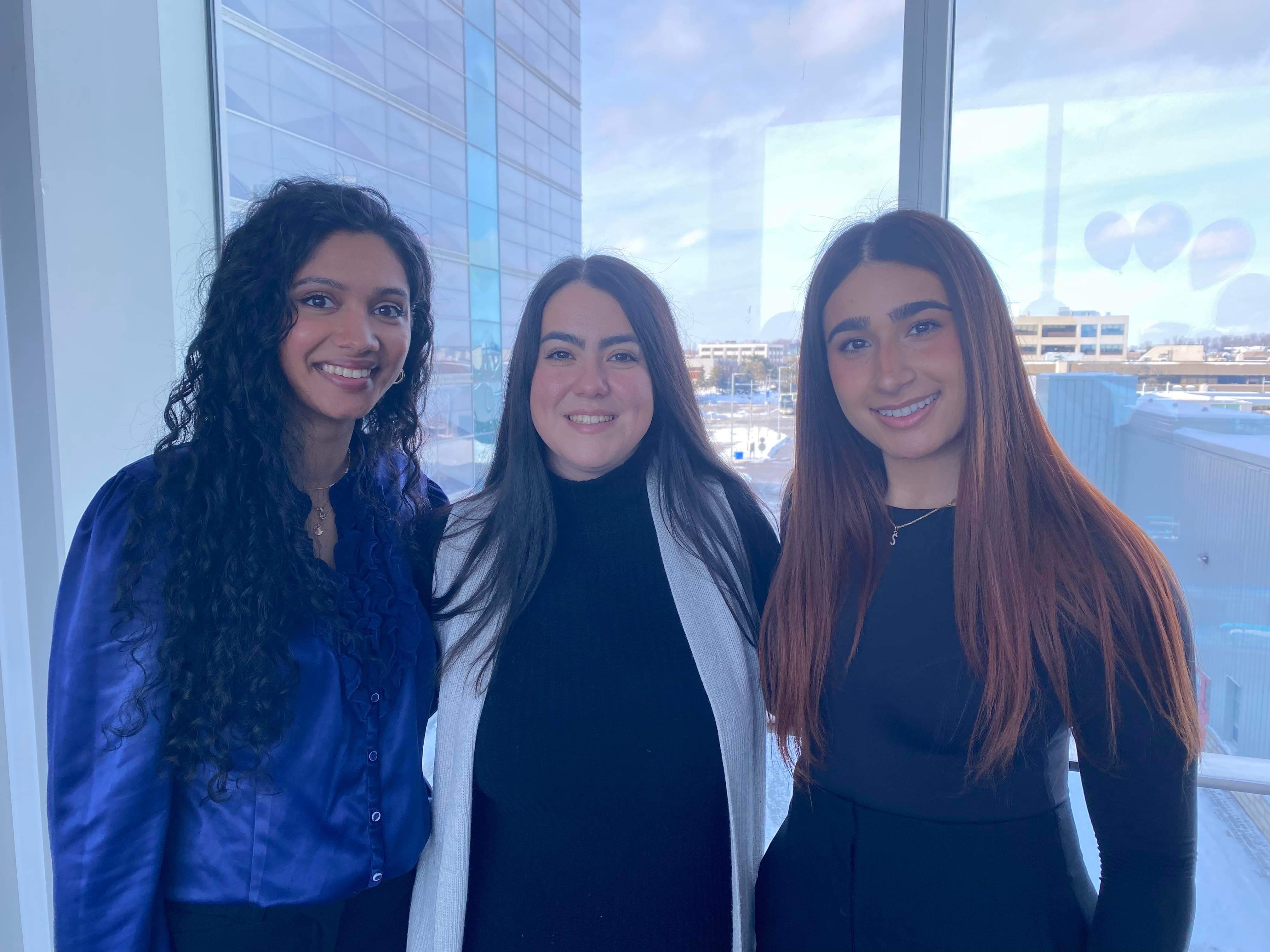CAPSTONE DESIGN PARTICIPANTS

Victor Luu

Irene Joy Dauz

Jasnain Dhaliwal

Tobe Ohaka

Bishal Thapa
Capture of Microplastics in Wastewater Treatment
6
The contamination of bodies of water from microplastics is an increasing concern in today’s society, as current wastewater treatment facilities do not have sufficient technologies to remove such contaminant. The goal of this project is to design a process that will capture these microplastics. Additionally, the proposed solution will be analyzed based on environmental, economic and safety impacts.
Faculty Advisor: Dr. Tizazu Mekonnen

Emily Smyth, Sayjal Sharma, Shania Joseph
Carbon Capture System in the Brewing Industry
7
During the fermentation process at many breweries, carbon dioxide is emitted directly into the environment. Our project aims to reduce the amount of carbon dioxide emitted into the environment from the fermentation process by modelling a carbon capture system using Aspen Plus to help analyze the sustainability of our solution and estimate the return on investment.
Faculty Advisor: Dr. Christine Moresoli
Partner Organization/Industry or Government Mentor: Sleeman Brewery

Periklis Dimitrios Alikiotis

Alexa Catherine Nicholson

Priyanka Jindal

Fatima Patricia Aldovino
Membrane-Based Ethanol Dehydration
8
Pressure Swing Distillation (PSD) is the industry standard for producing ethanol with a concentration ≥ 99.5% from fermentation broth. To reach the high ethanol purity standards of the pharmaceutical and food & beverage industries, PSD has to overcome the azeotropic system formed by ethanol and water. Disrupting the azeotropic system through distillation is an expensive and energy-intensive process. Using membrane separation could avoid costly azeotropic distillation, thereby reducing costs and emissions globally across the pharmaceutical and food and beverage industries.
Faculty Advisor: Dr. Michael Pope

Cyrus Malakooti

Jarrid Brake

Derian Tinline

Daniel Kim

Olamide Olatunbosun
Design of Industrial Scale Flow Batteries to Fulfill Peaking Demand with Green Energy
9
Ontario’s power grid is positioned to massively increase reliance on natural gas in the coming years, while curtailment of green electricity increases every year. Our solution is to use a vanadium redox flow battery as a storage method, mitigating both curtailment and natural gas reliance. Electricity price data has been analyzed to identify a profitable arbitrage control scheme, while sensitivity analysis was performed to independently size the cell stack and electrolyte tanks to ensure a feasible payback period and carbon neutrality.
Faculty Advisor: Dr. Michael Fowler

Sunho Bae

Yun Choi

Alexander Tin Yin Tse

Jason Buskell

Jarrell Yau
Design of an Onboard Hydrogen Storage Tank
10
The transportation industry generates large amounts of greenhouse gas emissions due to the burning of fossil fuels. Proton exchange membrane (PEM) cells can produce energy from oxygen and hydrogen gas and create water as a byproduct. Our aim is to design an onboard hydrogen storage tank for transport trucks and other vehicles that weigh more than 33000 pounds that will supply a PEM cell with hydrogen such that the energy capacity and output of the PEM cell matches a diesel engine.
Faculty Advisor: Dr. Michael Fowler